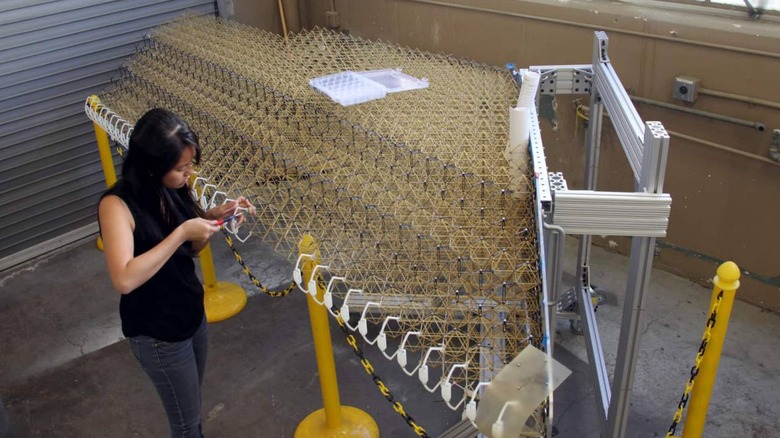NASA's Incredible Smart Wing Can Morph As It Flies
NASA is developing a flexible carbon fiber wing that could morph into new shapes mid-flight, paving the way for mesh intelligence woven through the aerodynamics of future aircraft. The project, dubbed MADCAT, combines advanced processing, new injection molding techniques, and cutting-edge materials.
MADCAT – or Mission Adaptive Digital Composite Aerostructure Technologies – is the handiwork of the NASA Ames Research Center in California. The project's goal is to develop wings that could adapt to flight conditions in a more significant way than traditional flaps.
Instead, the team envisaged a wing the whole shape of which could morph and adapt, becoming the most efficient shape for any circumstance. Such a wing would need to be highly flexible, of course, but also react quickly to aerodynamic need. In addition it would have to be readily maintained and repaired.
The solution is an ultra-light wing made up of carbon fiber composite. Injection molding is used to create lattice structures, which NASA refers to as "blocks," that are combined in a crisscrossed, modular fashion. "This variation in patterns creates a structure that can precisely flex and adapt," the space agency explains. "Computers integrated into the wing use algorithms to help it morph and twist into the most efficient shape mid-flight."
Key to the wing operating successfully is how MADCAT's processing operates. A traditional computer system would have a centralized point of processing, which would take in information and then issue instructions. However that would lead to unacceptable lag, not to mention demand a hugely powerful processor.
Instead, MADCAT uses smaller, distributed processing, integrated throughout the wing. Each wing is woven through with sensors, in the skin of the wing around the nodes, gathering data on factors like airflow. That data is then shared between neighboring nodes, each sensor taking its information and combining it with that of its neighbor.

Rather than the raw data, each node adds its inferences and conclusions to what's passed along. " In other words," NASA explains, :the sensors don't just pass along recorded values – they say what those values actually mean, and can report and interpret airflow patterns in real time, adjusting the structure of the plane's wing accordingly."
Unexpectedly, even though the wing may be complex, it's actually more straightforward to repair than a traditional aircraft would be. The individual blocks occupy a space known as a voxel, or volumetric pixel, and they're all identical. That means fewer unique pieces, making replacing them easier.

The proof of all that is in the testing, and that's something NASA has most recently completed with a 14-foot wide plane. The next challenge is to continue to refine the morphing, as well as make construction more straightforward and improve on reliability. In the end, the final design could make carbon fiber composite wings suited to any flight, any mission, or pretty much any atmospheric condition.
